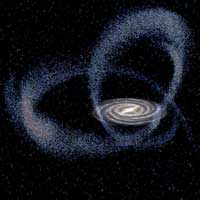 An international team of astronomers has presented a study which shows the crucial role of the Sagittarius Dwarf Galaxy in the evolution of our galaxy. These results also hint that the Sun might have been formed due to one of the interactions of this nearby galaxy with the Milky Way.
An international team of astronomers has presented a study which shows the crucial role of the Sagittarius Dwarf Galaxy in the evolution of our galaxy. These results also hint that the Sun might have been formed due to one of the interactions of this nearby galaxy with the Milky Way.
May 26th, 2020
Read more
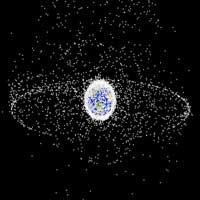 Internationally agreed upon fees to put satellites in orbit could boost value of the space industry.
Internationally agreed upon fees to put satellites in orbit could boost value of the space industry.
May 26th, 2020
Read more
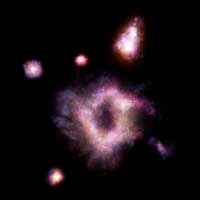 Unusual galaxy set to prompt rethink on how structures in the universe form.
Unusual galaxy set to prompt rethink on how structures in the universe form.
May 25th, 2020
Read more
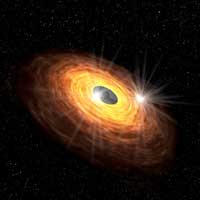 Astronomers found quasi-periodic flickers in millimeter-waves from the center of the Milky Way. The team interpreted these blinks to be due to the rotation of radio spots circling the supermassive black hole with an orbit radius smaller than that of Mercury. This is an interesting clue to investigate space-time with extreme gravity.
Astronomers found quasi-periodic flickers in millimeter-waves from the center of the Milky Way. The team interpreted these blinks to be due to the rotation of radio spots circling the supermassive black hole with an orbit radius smaller than that of Mercury. This is an interesting clue to investigate space-time with extreme gravity.
May 22nd, 2020
Read more
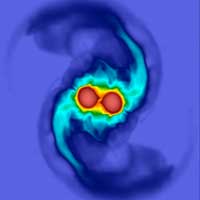 Gravitational-wave researchers have developed a new model that promises to yield fresh insights into the structure and composition of neutron stars.
Gravitational-wave researchers have developed a new model that promises to yield fresh insights into the structure and composition of neutron stars.
May 21st, 2020
Read more
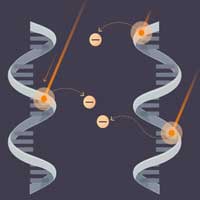 Astrophysicists propose that the influence of cosmic rays on early life may explain nature's preference for a uniform 'handedness' among biology's critical molecules.
Astrophysicists propose that the influence of cosmic rays on early life may explain nature's preference for a uniform 'handedness' among biology's critical molecules.
May 21st, 2020
Read more
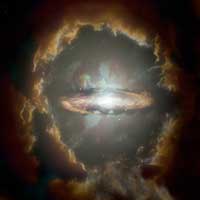 The discovery of the Wolfe Disk galaxy provides a challenge for many galaxy formation simulations, which predict that massive galaxies at this point in the evolution of the cosmos grew through many mergers of smaller galaxies and hot clumps of gas.
The discovery of the Wolfe Disk galaxy provides a challenge for many galaxy formation simulations, which predict that massive galaxies at this point in the evolution of the cosmos grew through many mergers of smaller galaxies and hot clumps of gas.
May 20th, 2020
Read more
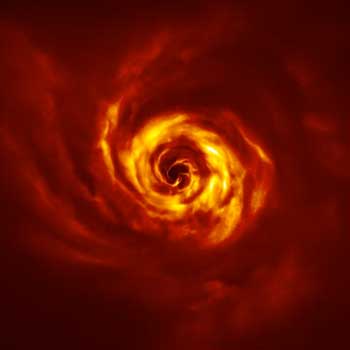 Around the young star AB Aurigae lies a dense disc of dust and gas in which astronomers have spotted a prominent spiral structure with a 'twist' that marks the site where a planet may be forming. The observed feature could be the first direct evidence of a baby planet coming into existence.
Around the young star AB Aurigae lies a dense disc of dust and gas in which astronomers have spotted a prominent spiral structure with a 'twist' that marks the site where a planet may be forming. The observed feature could be the first direct evidence of a baby planet coming into existence.
May 20th, 2020
Read more
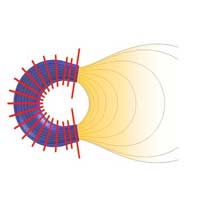 Researchers have developed a new spatial plasma-fueled engine capable of satellite and spacecraft propulsion, with magnetic field geometry and configuration that would minimize losses on walls and their erosion, thereby resolving issues of efficiency, durability, and operating restrictions of engines that are currently in orbit.
Researchers have developed a new spatial plasma-fueled engine capable of satellite and spacecraft propulsion, with magnetic field geometry and configuration that would minimize losses on walls and their erosion, thereby resolving issues of efficiency, durability, and operating restrictions of engines that are currently in orbit.
May 20th, 2020
Read more
 Astronomers use Bayesian statistics to shed light on how extraterrestrial life might evolve in alien worlds.
Astronomers use Bayesian statistics to shed light on how extraterrestrial life might evolve in alien worlds.
May 19th, 2020
Read more
 The mystery of some lava-like flows on Mars has been solved by scientists who say they are caused not by lava but by mud.
The mystery of some lava-like flows on Mars has been solved by scientists who say they are caused not by lava but by mud.
May 18th, 2020
Read more
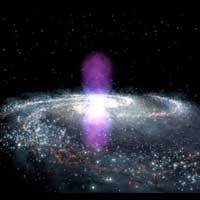 Recently, researchers have presented a new model that for the first time simultaneously explains the origins of both the Fermi bubbles and the Galactic center biconical X-ray structure, which was discovered in 2003.
Recently, researchers have presented a new model that for the first time simultaneously explains the origins of both the Fermi bubbles and the Galactic center biconical X-ray structure, which was discovered in 2003.
May 15th, 2020
Read more
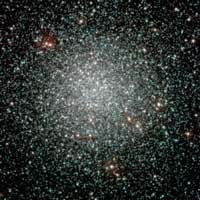 Mergers between black holes and neutron stars in dense star clusters are quite unlike those that form in isolated regions where stars are few. Their associated features could be crucial to the study of gravitational waves and their source.
Mergers between black holes and neutron stars in dense star clusters are quite unlike those that form in isolated regions where stars are few. Their associated features could be crucial to the study of gravitational waves and their source.
May 15th, 2020
Read more
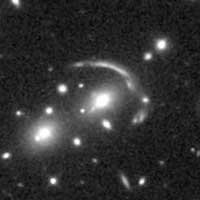 Images collected for dark energy telescope project reveal hundreds of new gravitational lens candidates.
Images collected for dark energy telescope project reveal hundreds of new gravitational lens candidates.
May 14th, 2020
Read more
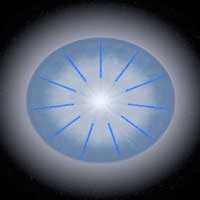 Astronomers have detected elusive pulsation patterns in dozens of young, rapidly rotating stars. The discovery will revolutionize scientists' ability to study details like the ages, sizes and compositions of these stars -- all members of a class named for the prototype, the bright star Delta Scuti.
Astronomers have detected elusive pulsation patterns in dozens of young, rapidly rotating stars. The discovery will revolutionize scientists' ability to study details like the ages, sizes and compositions of these stars -- all members of a class named for the prototype, the bright star Delta Scuti.
May 14th, 2020
Read more
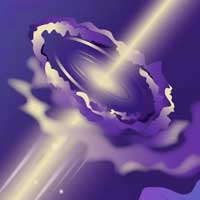 Researchers trace high-energy neutrino origins to black holes in far-off quasars.
Researchers trace high-energy neutrino origins to black holes in far-off quasars.
May 13th, 2020
Read more
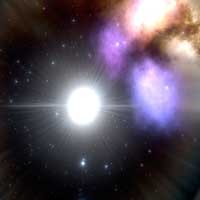 Through the noise, a class of stars reveals its inner workings; poor 'social distancing' identified using NASA space telescope.
Through the noise, a class of stars reveals its inner workings; poor 'social distancing' identified using NASA space telescope.
May 13th, 2020
Read more
 Researchers simulate the core of Mars to investigate its composition and origin.
Researchers simulate the core of Mars to investigate its composition and origin.
May 13th, 2020
Read more
 An international team of astronomers has presented a study which shows the crucial role of the Sagittarius Dwarf Galaxy in the evolution of our galaxy. These results also hint that the Sun might have been formed due to one of the interactions of this nearby galaxy with the Milky Way.
An international team of astronomers has presented a study which shows the crucial role of the Sagittarius Dwarf Galaxy in the evolution of our galaxy. These results also hint that the Sun might have been formed due to one of the interactions of this nearby galaxy with the Milky Way.
 Subscribe to our Space Exploration News feed
Subscribe to our Space Exploration News feed















